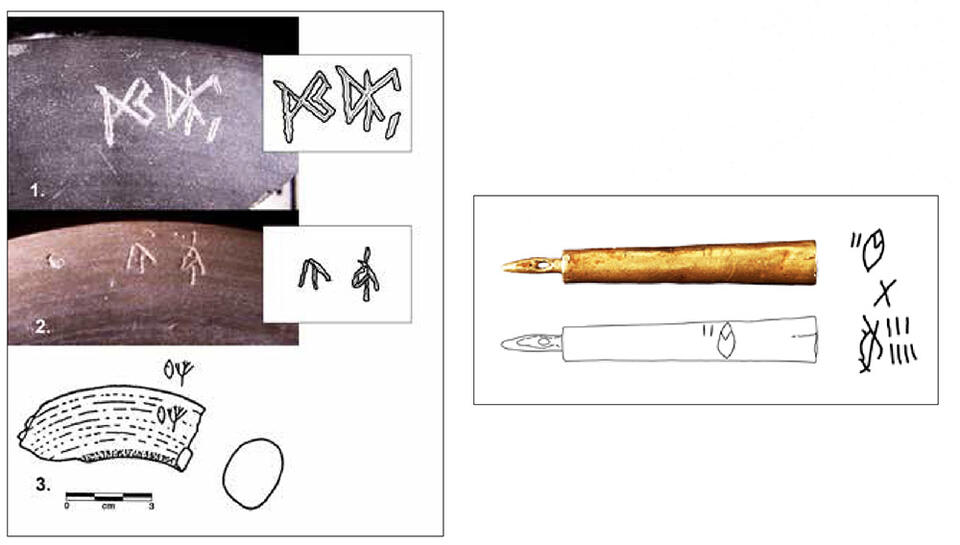A careful look at one of the least studied forms of Indus writing. "The painting of script on pottery. Painting script requires a specially prepared brush that could have been the same as that used for decorating pottery, but would have been selected to have the appropriate size and shape for the size of the script being painted," writes Mark Kenoyer, "the black or red pigment used for the script appears to be identical to the pigment used for painting the designs on pottery, but it may have been prepared separately depending on when the writing was executed," (p. 1). What is also is interesting is how much the author manages to deduce from his observations, about the skills of the artist and signs they had to work with: "The skill needed to paint script on pottery would mean that the artist knew both how to create the shapes and sizes of the script correctly as well as how to handle a brush filled with pigment. Based on the few examples of painted script that have been found, we can see that some examples show a relatively high degree of dexterity in the use of the brush."
The paper covers recent finds in Gujarat, like Karanpura and Dholavira, even one from Oman, bangles (above), and of course the variety of examples of painted script on pottery from numerous Indus cities and sites. There is an extensive Table and drawings of all the finds and one of post-firing examples from Harappa. Some, like a gold pendant, were only noticed by the author after being missed by earlier excavators, making one wonder how many of these examples remain to be found among already excavated pieces (writing on bangles tends to be tiny), not to mention objects still in the ground. "In comparing these different examples of Indus script on seals, pottery, stoneware bangles and jewelry, it is clear that there is some degree of standardization in terms of sign sizes and proportions, even though there is some variation in the execution of the inscriptions themselves. It appears that the shapes of the writing and the general proportions of the signs remain almost identical regardless of the medium or the method of inscription," writes Kenoyer (p. 5).
While it is hard to draw conclusions about where else Indus script may have been put down by brush or incision besides seals, the sophistication of some of the examples suggests that this could have been a well-practiced form. Dr. Kenoyer concludes that "the possibility that the Indus script was painted on perishable materials such as leather, parchment, cloth, wood, birch bark or palm leaf manuscripts is also something that needs to be considered. Although these perishable materials are rarely recovered from Indus period sites, they have been recovered from Kushana period sites in the Indus region later and excavators need to be ready to preserve and document any fragile artifacts that might contain some traces of writing," (p. 12). Much has been made of there not being lengthy examples of Indus writing, but might it simply be that the mediums used have not survived for four thousand years?
Images: 1. Left: Harappa Phase, Inscribed Stoneware Bangles: 1. Inscribed stoneware bangle, Mohenjo-daro (not to scale), 2. Inscribed stoneware bangle, Mohenjo-daro (not to scale), 3. Inscribed stoneware bangle, Harappa.
2. Right: Harappa Phase, Inscribed Gold Pendant, Mohenjo-daro.
Originally published in Ancient Pakistan, Vol. XXXII, 2021: 1–15, ISSN: 0066-1600(print)/ 2708-4590 (online).

